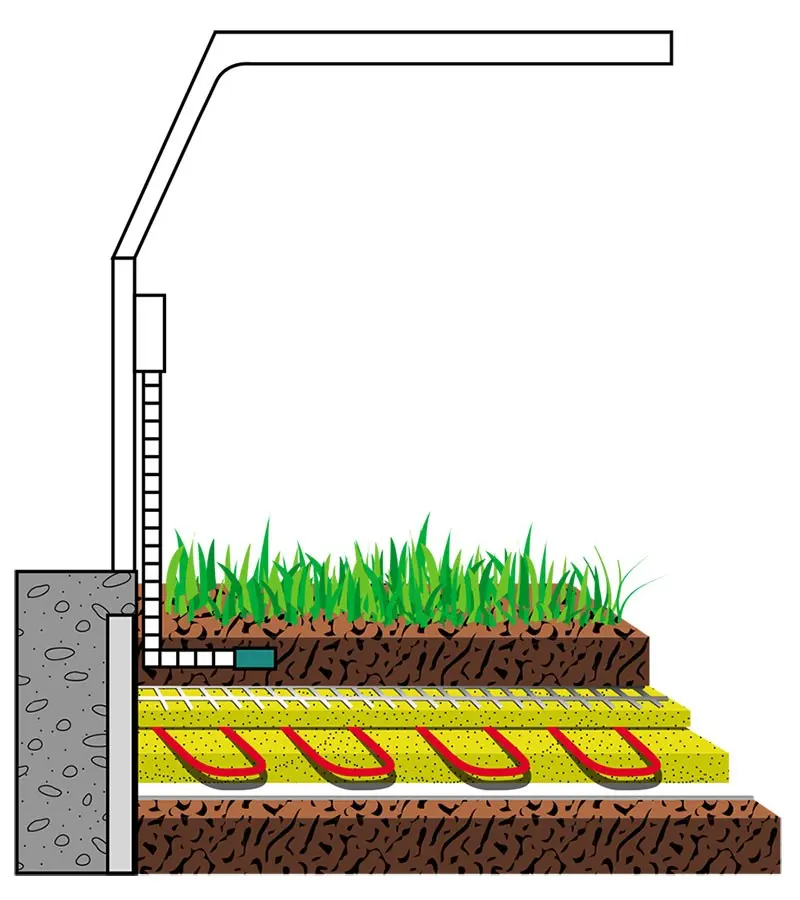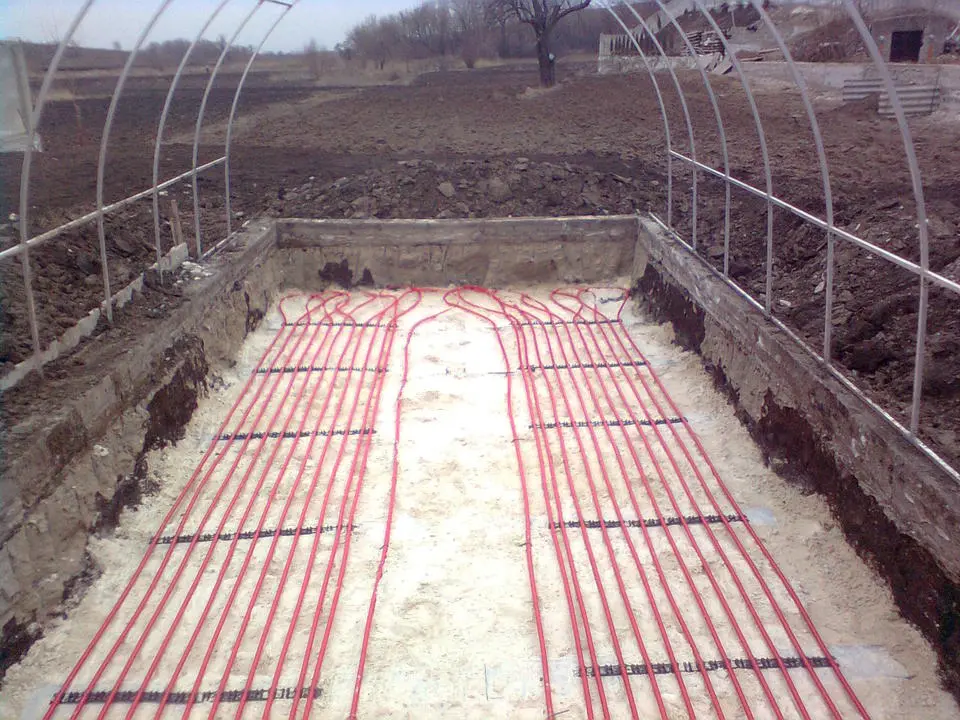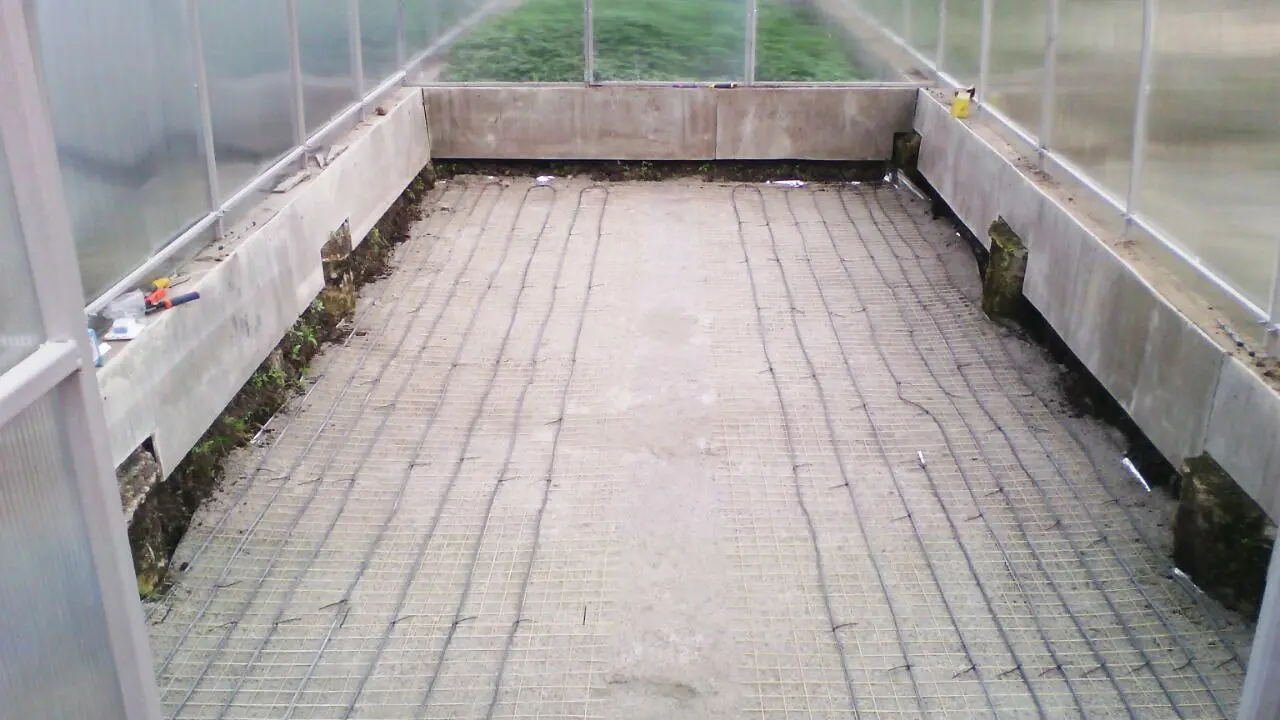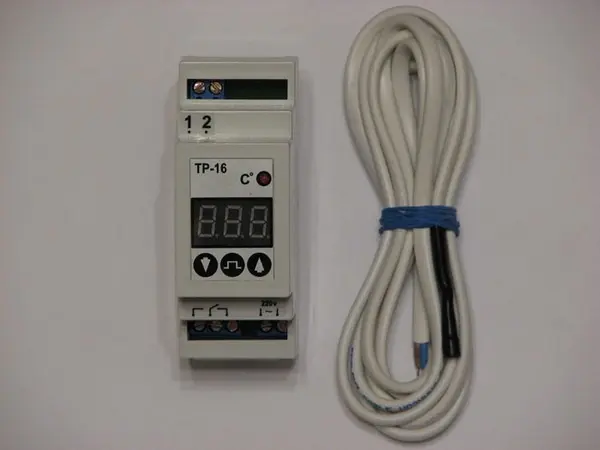Contents
Heating a greenhouse is an important element of plant care. It allows you to ignore frosts, start the planting season a few months earlier, grow any crop in the winter. One of the most common ways is cable for greenhouses. The cable heating system is very similar to the “warm” floor, and works according to the same scheme. The high strength of the cable allows it to be used as a heating element for soil with almost any load. How to lay the heating cable with your own hands, operation features and useful tips – in this article.
The advantages of using
A heating cable, like a heating element of the soil in a greenhouse, brings many positive aspects to the gardener’s life. First of all, it should be noted the early start of the season – the air temperature in the greenhouse remains suitable for planting and growing all crops all year round.

In addition to early harvesting, in comparison with other types of heating or their absence, ground heating with a cable is an ergonomic option with significant energy savings. Since you regulate and set the temperature with your own hands, the roots of the plants receive the necessary heating on an ongoing basis. Thus, the prevention of fungal diseases, as well as pathologies in the development of the root system of garden crops, is carried out.
The aesthetic point of heating the soil with a heating cable is that the system is invisible to an outsider, since it is laid deep into the ground. By creating a warm floor in a greenhouse, you ensure uniform heating of the soil around the entire perimeter of the room.
The heating system using such a system is easier to assemble with your own hands than gas heaters or mounting infrared heaters in the room. This will allow you to distribute the budget much more efficiently, as well as the time allotted for the construction and laying of the heating system under the floor.
Video “Warm bed in a greenhouse, carbon cord”
A video about heating a bed in a greenhouse with a carbon cord.
Cable installation
Before starting the installation of the cable system, mark the areas where the beds will be located. According to the markup, install wooden or galvanized boxes into which the cable will be laid. A wooden box will last 2-3 years, and everything else is easy to make with your own hands.

Dig trenches 11-13 cm wide along the perimeter of the beds, measure the depth along the height of the box wall. In these trenches, rotted manure and bird droppings are laid with a layer of about 6-7 cm. Compact the fertilizer well, then fill the trenches with plant debris and the earth that they have dug.
The bottom of the box must be lined with heat-insulating material, polystyrene can be used. This is done to conserve heat and prevent it from escaping into the ground. Pour sand on top so that the layer is up to 6 cm high, moisten well and compact the layer. The preparatory stage for creating a greenhouse heating with do-it-yourself cables is over.

The ground heating system is built on CH-15 and CH-18 cables. You can fix the wires at the bottom of the box using mounting tape. Keep a distance of 15-16 cm between the turns. When you finish laying the cable with your own hands, apply another layer of sand 5-6 cm high, gently moisten the sand so that air bubbles do not form.
A perforated sheet of asbestos cement or a metal mesh is laid on top of the sand. In this way, you will protect the cable from damage when caring for plants. The last layer is fertilized soil. The layer height is about 35-45 cm.
Features of operation
The floor in the greenhouse should always be well warmed up in order to give the plants the necessary amount of heat for the healthy formation of green mass and fruits. At the same time, soil heating, which is easy to create with your own hands using cables, interacts remarkably with organic fertilizers, accelerating their decomposition and introducing nutrients into the soil.
The heating temperature is regulated using a thermostat: you set the required value to which the soil should warm up and after the cable warms up to it, the system will automatically turn off. Restart occurs after reaching the lower mark of the set temperature. Thus, you do not have to constantly monitor the operation of the system.

When underfloor heating is switched on and off, the above-described energy savings occur, since the heater does not require large resources for productive work.
Considering the security system, both the cable itself, which is laid in the floor, which can withstand up to 150 kg for breaking, and the box, mechanical damage is reduced to zero. The iron mesh will prevent the coils from being touched with a shovel when digging, and the wooden box will prevent the entire system from sinking too deep into the ground.
It is best to start the heating system in early spring when the soil needs to warm up quickly. A heated greenhouse floor will help reduce frost damage during the spring months, as well as neutralize autumn colds for late-ripening crops. Depending on the type of greenhouse cover, active use of the cable system is also possible in winter. In the warm season, the system can be turned off at the thermostat.
Video “Greenhouse heating – heating with electric cable ChTK”
Video on how to heat the soil in a greenhouse for an early harvest.









